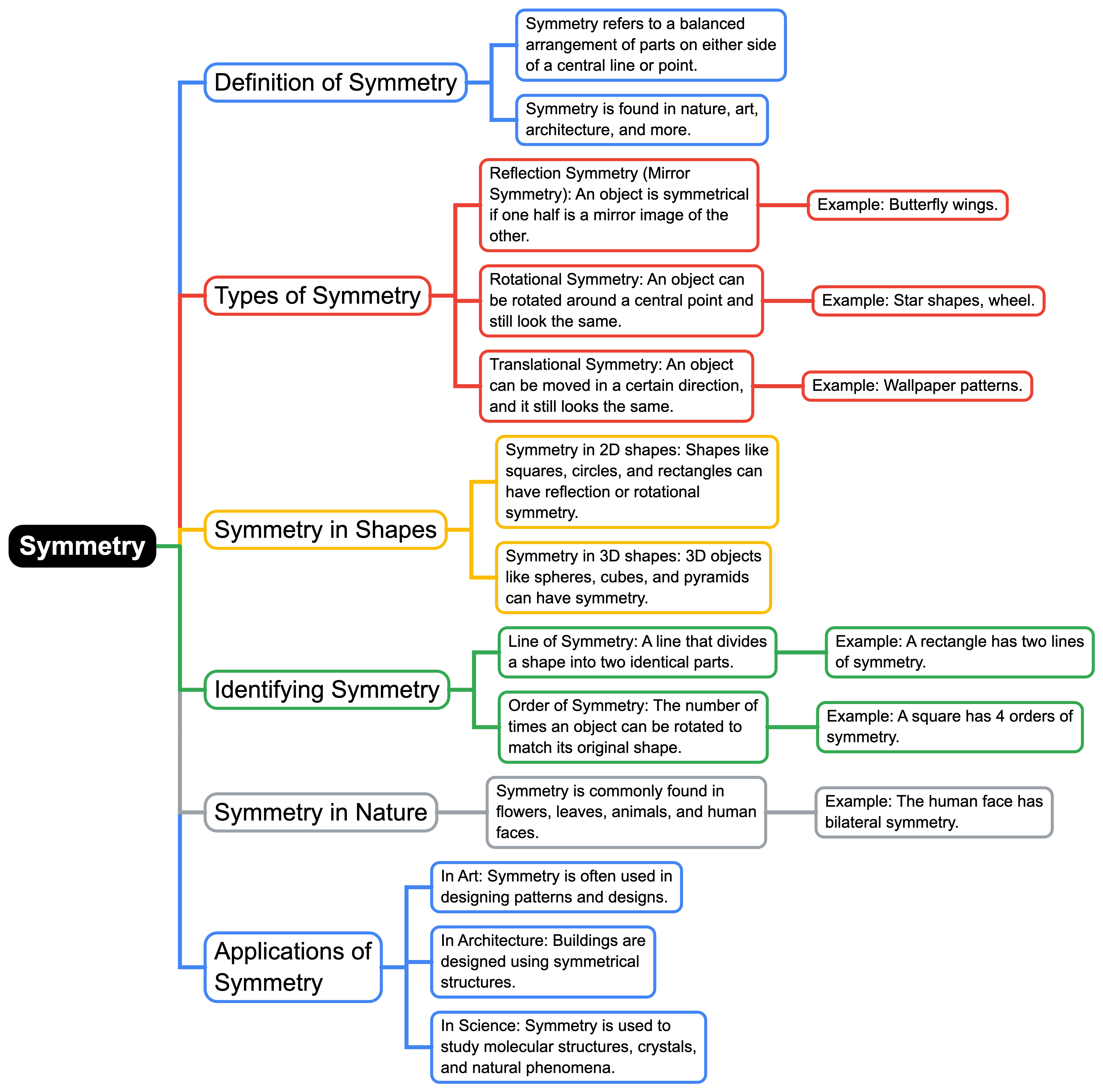Class 7 Exam > Class 7 Notes > Mathematics (Maths) Class 7 (Old NCERT) > Mind Map- Symmetry
Mind Map- Symmetry | Mathematics (Maths) Class 7 (Old NCERT) PDF Download

The document Mind Map- Symmetry | Mathematics (Maths) Class 7 (Old NCERT) is a part of the Class 7 Course Mathematics (Maths) Class 7 (Old NCERT).
All you need of Class 7 at this link: Class 7
|
76 videos|386 docs|39 tests
|
FAQs on Mind Map- Symmetry - Mathematics (Maths) Class 7 (Old NCERT)
| 1. What is symmetry in mathematics? |  |
Ans. Symmetry in mathematics refers to a situation where a shape or object can be divided into two identical parts that are mirror images of each other. This can occur in various forms, such as line symmetry (where one half is a reflection of the other across a line) and rotational symmetry (where an object can be rotated around a central point and still look the same).
| 2. How can we identify line symmetry in shapes? |  |
Ans. To identify line symmetry in shapes, you can draw a line (called the line of symmetry) through the shape. If the two halves on either side of the line are mirror images of each other, the shape has line symmetry. You can fold the shape along the line to see if the two sides match perfectly.
| 3. What are some examples of symmetrical shapes? |  |
Ans. Some common examples of symmetrical shapes include a square, a circle, and an equilateral triangle. Each of these shapes can be divided into equal halves through various lines of symmetry. For instance, a square has four lines of symmetry, while a circle has an infinite number of lines of symmetry.
| 4. How is symmetry used in real life? |  |
Ans. Symmetry is used in various aspects of real life, including art, architecture, nature, and design. It helps create visually appealing structures and objects. For example, many buildings are designed with symmetrical features, and artists often use symmetry to create balanced compositions in their artwork.
| 5. What is the difference between line symmetry and rotational symmetry? |  |
Ans. Line symmetry occurs when a shape can be divided into two identical halves by a straight line, while rotational symmetry occurs when a shape can be rotated around a central point and still look the same at certain angles. For instance, a square has both line symmetry (four lines) and rotational symmetry (90-degree rotations).
Related Searches
















